
To help that internal shift take place coaches must be competent at working with emotions. The perpetual challenge for most coaches whether they have a mental health background or not, is how to do so and ‘stay in the coach lane’ – within their scope of practice as a coach. For fear of straying out of that lane into the fast-lane of counseling and psychotherapy, many coaches shy away from what I will call wading into the lake of emotions. Let me use that phrase to share with you a simple, yet hopefully helpful metaphor.

The Lake of Emotions
Perhaps you’ve experienced wading into a body of water on a nice summer’s day. A calm lake or pond, a shallow and calm part of the ocean, or even a swimming pool. For our metaphor, let’s consider a lake. As you look out in front of you it is easy to see the bottom of the lake, perhaps sandy, perhaps rocky. The water is clear, and you can start to take a few steps into the shallow water confidently.
Further out into the lake the bottom seems to disappear into darkness. You’re not sure how deep it gets.
As your coaching client begins to wade into such a lake of emotion it seems easy enough to wade in with them, to empathize, to reflect the feelings that are being brought forth. Afterall, it is still shallow and clear. You can see and feel the bottom under your bare feet.
As this process of exploring emotion begins, what is happening for you the coach? Are you able to stride forward with your client as they talk more about what they are aware of, about how they feel? When your client expresses those feelings are you able to stay with them as the lake gets deeper? Are you beginning to wonder how deep your client wants and needs to go?
Perhaps you look back to the shore and want to retreat to solid ground, to dry land. You do so by failing to empathize, by asking questions that get your client ‘up in their head’ and away from their feelings. Instead of helping them to connect with the water they are in, and feel and express their feelings, perhaps we begin to backpedal towards the shore and shift the topic to something less wet and emotional.
The thing to remember is that you and your client are standing on the solid bottom of the lake. That lake bottom is the structure and limitations of coaching. You have an agreement that you and your client share that is a coaching agreement – an agreement to wade into the water, and get wet, but not to start swimming in water so deep that it is over your heads.
Keeping our feet on the lake bottom, staying within coaching structure and methodology we can help our clients to get into water that is deeper and learn from their emotions, to help them clarify their feelings, to name those feelings and express them. We can help them achieve insights and utilize them in their lives to help them to be healthy and grow.
 Now, your client may keep taking steps into that deeper water, they may want to dive in and start swimming further out into that lake. Perhaps they start going into detail about past experiences like childhood abuse or neglect. At this point, are you encouraging them to do so? Are you asking questions that seek to resolve old conflicts and wounds of the past? Are you asking them to relive past traumas for the purpose of resolution? Are you wading into that zone where the lake bottom starts to fall away out of your own curiosity?
Now, your client may keep taking steps into that deeper water, they may want to dive in and start swimming further out into that lake. Perhaps they start going into detail about past experiences like childhood abuse or neglect. At this point, are you encouraging them to do so? Are you asking questions that seek to resolve old conflicts and wounds of the past? Are you asking them to relive past traumas for the purpose of resolution? Are you wading into that zone where the lake bottom starts to fall away out of your own curiosity?
Perhaps you and your client are starting to realize that for progress to be truly made the client does need to go beyond the depth of coaching. The thing is, coaches are not trained or qualified to ‘swim’ with our clients in water over our heads. To do so, clients need a counselor, a therapist, a trained mental health professional.
So when you get that feeling that the coaching conversation is starting to drift towards more of a clinical conversation, when that lake bottom seems like it’s beyond where you can place your feet safely, you can always step back and lean into the question of resolution versus relevance. Taking that step back first of all occurs in your own mind – am I seeking to help my client towards resolution or is there a way to tie this back to the relevance of what they are working on achieving in coaching?
An Example
Say your client begins to talk about the loss of a dear friend who recently died. You respond with compassion. They go on to talk about how their loss put them in touch with their own mortality and the importance of reaching out to the friends they have and appreciating them. You pick up on the emotion present and reflect it back to your client. Then they also begin talking about what occurred years ago when their father died and how it affected them and their whole family.
This is where you, the coach, can either inquire more about the death of the father, or, perhaps after empathizing about the client’s loss of their father, summarize and ask the client how the client would like to pursue this topic of loss. If the client wants to talk about how their recent loss has put them in touch with their appreciation of their friends and increasing connection with them, we are stepping back onto solid ground for coaching. If we pursue resolving the unfinished emotional business related to their father’s death years ago, we are wading into water out of our scope of practice and getting into to water where we don’t know the potential depth.
Remember, effective coaches work with emotions, they honor their client’s feelings. We can do so safely as long as we stay within the coaching structure and feel the earth beneath our feet.
Learn more about how to coach with emotions and integrate that into your work with your clients. Check out these previous blogs and keep your feet on that lake bottom!
• The Great Utility of Coaching In The Emotional Realm https://realbalancewellness.wordpress.com/2017/06/07/the-great-utility-of-coaching-in-the-emotional-realm
• Process Coaching: Yes, Coaches “Do Emotions” http://wp.me/pUi2y-dL
• Coaching a Client Through to A Mental Health Referral Using The Stages of Change http://wp.me/pUi2y-lp)
• Emotions, Feelings and Healthy Choices: Coaching for Greater Wellness https://realbalancewellness.wordpress.com/2019/09/10/emotions-feelings-and-healthy-choices-coaching-for-greater-wellness/
• Clarity on Scope of Practice: The What, the How and the Why of Lifestyle Improvement https://realbalancewellness.wordpress.com/2022/02/18/clarity-on-scope-of-practice-the-what-the-how-and-the-why-of-lifestyle-improvement/
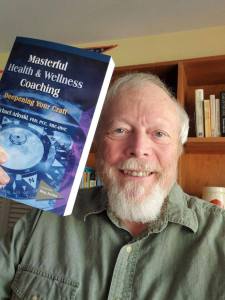
Michael Arloski, Ph.D., PCC, NBC-HWC is CEO and Founder of Real Balance Global Wellness – a world leader in health and wellness coach training (https://realbalance.com/). Doctor Arloski is a pioneering architect of the field of health and wellness coaching. He and his company have trained thousands of coaches around the world.


 When co-creating Action Steps to help your client achieve their wellness goals, ask: “So, what do you think will happen if you go ahead with this action step? What sort of reaction can you already anticipate?” Chances are good that your client already has an idea, or some fears, about how this new shift in their behavior might be received. That’s when you can work together to come up with some pre-emptive strategies for dealing with potential reactions to change.
When co-creating Action Steps to help your client achieve their wellness goals, ask: “So, what do you think will happen if you go ahead with this action step? What sort of reaction can you already anticipate?” Chances are good that your client already has an idea, or some fears, about how this new shift in their behavior might be received. That’s when you can work together to come up with some pre-emptive strategies for dealing with potential reactions to change.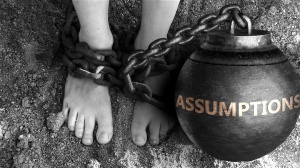 accepting their immediate story about something, help them to get curious about it. What do they actually know about it? Are there gaps in their knowledge? Are they filling in the gaps with assumptions?
accepting their immediate story about something, help them to get curious about it. What do they actually know about it? Are there gaps in their knowledge? Are they filling in the gaps with assumptions?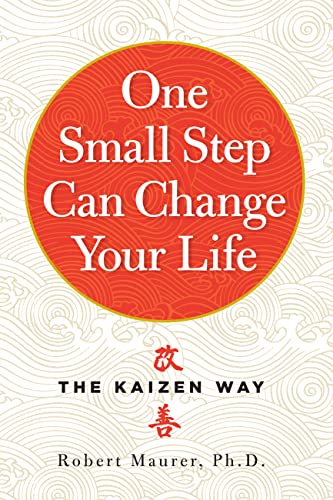 Kai Zen and the Amygdala Hijack
Kai Zen and the Amygdala Hijack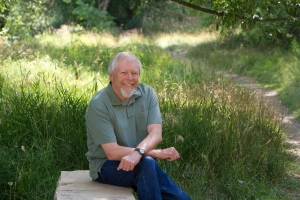 Michael Arloski, Ph.D., PCC, NBC-HWC is CEO and Founder of Real Balance Global Wellness – a world leader in health and wellness coach training (
Michael Arloski, Ph.D., PCC, NBC-HWC is CEO and Founder of Real Balance Global Wellness – a world leader in health and wellness coach training (
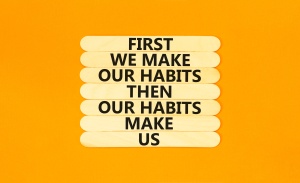 Coaching Habits To Unhook From
Coaching Habits To Unhook From

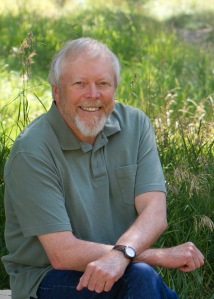 Michael Arloski, Ph.D., PCC, NBC-HWC is CEO and Founder of Real Balance Global Wellness – a world leader in health and wellness coach training (
Michael Arloski, Ph.D., PCC, NBC-HWC is CEO and Founder of Real Balance Global Wellness – a world leader in health and wellness coach training (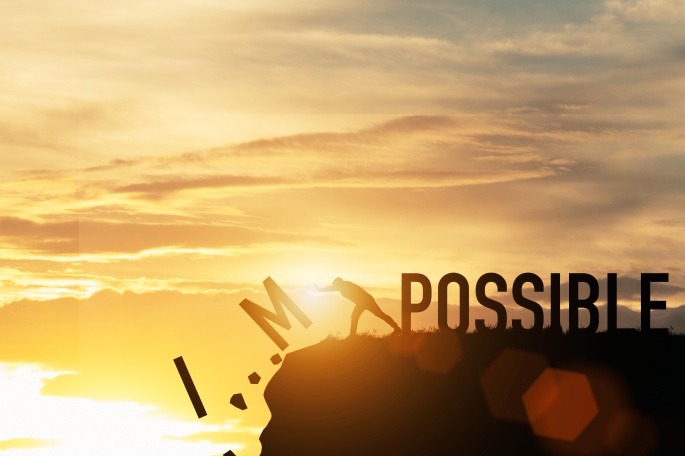
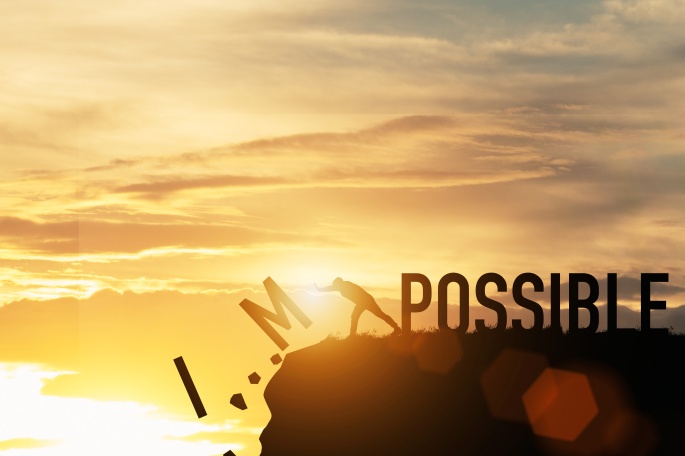
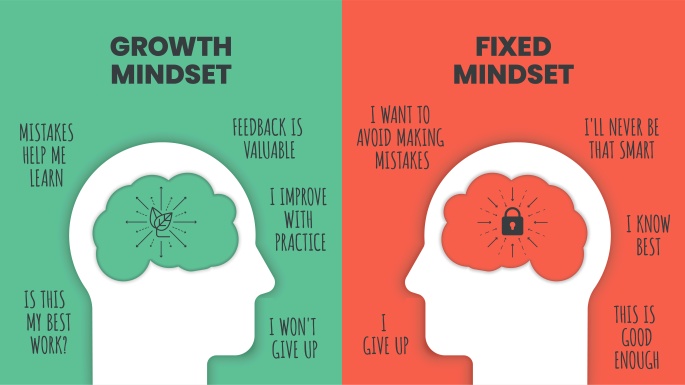 The concept of the Growth Mindset vs. the Fixed Mindset was pioneered by a Stanford Colleague of Crum’s: Dr. Carol Dweck. Her work showed us the tremendous effects of the mindset we hold about intelligence. Is your intelligence fixed, or malleable? Here are some thoughts from an excellent blog about Dweck’s work. “Your view of yourself can determine everything. If you believe that your qualities are unchangeable — the fixed mindset — you will want to prove yourself correct over and over rather than learning from your mistakes.” “…as you begin to understand the fixed and growth mindsets, you will see exactly how one thing leads to another— how a belief that your qualities are carved in stone leads to a host of thoughts and actions, and how a belief that your qualities can be cultivated leads to a host of different thoughts and actions, taking you down an entirely different road.” “In fact Dweck takes this stoic approach, writing: “in the growth mindset, failure can be a painful experience. But it doesn’t define you. It’s a problem to be faced, dealt with, and learned from.” “We can still learn from our mistakes. The legendary basketball coach John Wooden says that you’re not a failure until you start to assign blame. That’s when you stop learning from your mistakes – you deny them.”
The concept of the Growth Mindset vs. the Fixed Mindset was pioneered by a Stanford Colleague of Crum’s: Dr. Carol Dweck. Her work showed us the tremendous effects of the mindset we hold about intelligence. Is your intelligence fixed, or malleable? Here are some thoughts from an excellent blog about Dweck’s work. “Your view of yourself can determine everything. If you believe that your qualities are unchangeable — the fixed mindset — you will want to prove yourself correct over and over rather than learning from your mistakes.” “…as you begin to understand the fixed and growth mindsets, you will see exactly how one thing leads to another— how a belief that your qualities are carved in stone leads to a host of thoughts and actions, and how a belief that your qualities can be cultivated leads to a host of different thoughts and actions, taking you down an entirely different road.” “In fact Dweck takes this stoic approach, writing: “in the growth mindset, failure can be a painful experience. But it doesn’t define you. It’s a problem to be faced, dealt with, and learned from.” “We can still learn from our mistakes. The legendary basketball coach John Wooden says that you’re not a failure until you start to assign blame. That’s when you stop learning from your mistakes – you deny them.”


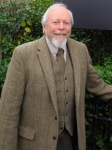 Michael Arloski, Ph.D., PCC, NBC-HWC is CEO and Founder of Real Balance Global Wellness – a world leader in health and wellness coach training (
Michael Arloski, Ph.D., PCC, NBC-HWC is CEO and Founder of Real Balance Global Wellness – a world leader in health and wellness coach training ( Winter is a great time for coaches to rest up, reflect and recharge their energy. It’s a great time to also work on your ongoing professional development and what better way this time of year than to cozy up with a good book!
Winter is a great time for coaches to rest up, reflect and recharge their energy. It’s a great time to also work on your ongoing professional development and what better way this time of year than to cozy up with a good book!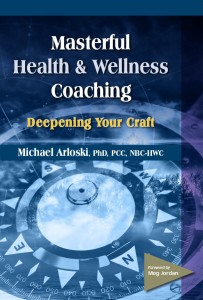
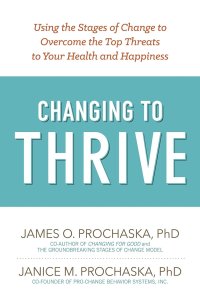 (
(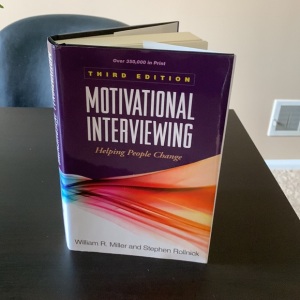
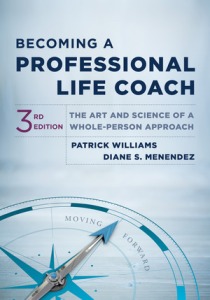
 This journal lays out the whole Wellness Mapping 360 Methodology for lifestyle improvement for clients to use either with a coach, or if they are quite self-directed, on their own. As such it becomes a very useful workbook for the coach to understand coaching methodology and understand how lifestyle behavioral change can happen effectively. Numerous tools included.
This journal lays out the whole Wellness Mapping 360 Methodology for lifestyle improvement for clients to use either with a coach, or if they are quite self-directed, on their own. As such it becomes a very useful workbook for the coach to understand coaching methodology and understand how lifestyle behavioral change can happen effectively. Numerous tools included. Honorable Mentions
Honorable Mentions
 A stimulating conversation with a colleague launched me on an exploration of how we can allow ourselves to be more creative in the coaching work we do. A mark of a more masterful coach that I’ve always observed is their ability to be creative in the moment in ways that enhanced the coaching process. Watching them work, I would see inventive experiments emerge that were not just tricks from an old reliable bag, but fresh adventures for the client to try out. What allows a coach to come up with something new that fits the moment and catalyzes the client’s growth? Creativity has relevance to health and wellness coaching in a number of ways.
A stimulating conversation with a colleague launched me on an exploration of how we can allow ourselves to be more creative in the coaching work we do. A mark of a more masterful coach that I’ve always observed is their ability to be creative in the moment in ways that enhanced the coaching process. Watching them work, I would see inventive experiments emerge that were not just tricks from an old reliable bag, but fresh adventures for the client to try out. What allows a coach to come up with something new that fits the moment and catalyzes the client’s growth? Creativity has relevance to health and wellness coaching in a number of ways. Years ago, I coached a client who knew that the more he engaged in creative self-expression, the more centered, grounded, and effective he would be in his business as a busy insurance agency owner. My coaching with this very self-directed person was mostly about helping him stay on track and accountable to himself with his pottery, photography, and writing. The more he expressed himself this way, the more confident and self-assured he was in his business.
Years ago, I coached a client who knew that the more he engaged in creative self-expression, the more centered, grounded, and effective he would be in his business as a busy insurance agency owner. My coaching with this very self-directed person was mostly about helping him stay on track and accountable to himself with his pottery, photography, and writing. The more he expressed himself this way, the more confident and self-assured he was in his business.
 The Creative Coach
The Creative Coach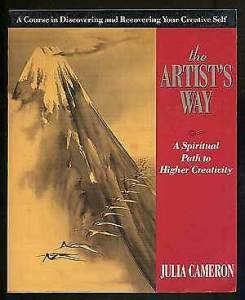 (
( Michael Arloski, Ph.D., PCC, NBC-HWC is CEO and Founder of Real Balance Global Wellness – a world leader in health and wellness coach training. (
Michael Arloski, Ph.D., PCC, NBC-HWC is CEO and Founder of Real Balance Global Wellness – a world leader in health and wellness coach training. ( Coach training often talks about the importance of the ‘Coaching Conversation’. What is it exactly and how is it very different from a Social Conversation?
Coach training often talks about the importance of the ‘Coaching Conversation’. What is it exactly and how is it very different from a Social Conversation?



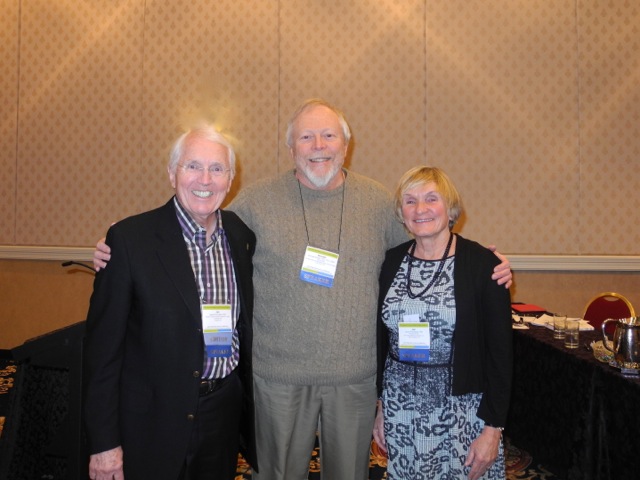 James and Janice Prochaska were kind enough to edit the section of my new book Masterful Health & Wellness Coaching: Deepening Your Craft
James and Janice Prochaska were kind enough to edit the section of my new book Masterful Health & Wellness Coaching: Deepening Your Craft 
 3. Defending: Sometimes our clients feel criticized by people in their lives about the way they are living an unhealthy lifestyle. Their tendency may be to defend or protect their current risky behavior. Defensive behavior is in fact most often a way of protecting independence or autonomy. They may do this by:
3. Defending: Sometimes our clients feel criticized by people in their lives about the way they are living an unhealthy lifestyle. Their tendency may be to defend or protect their current risky behavior. Defensive behavior is in fact most often a way of protecting independence or autonomy. They may do this by:

 • Look at the camera
• Look at the camera • Be aware of your surroundings.
• Be aware of your surroundings.

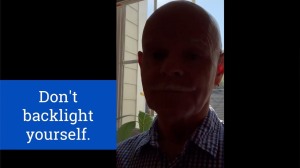
 The Visual Aspect of Nonverbal Communication
The Visual Aspect of Nonverbal Communication